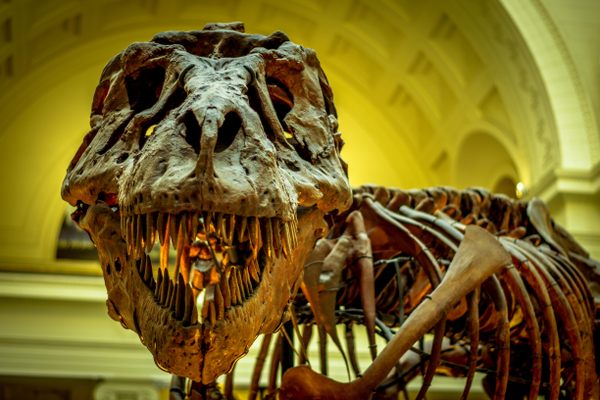How to Make a Fossil in a Single Day
The recipe calls for fresh feathers or lizard feet, clay, heat, and a whole lot of pressure.

Millions of years ago, some bird met the end of its life. Maybe it happened to flutter to the ground in a special place at a special time, where maybe, just maybe, the conditions were right to preserve its remains for millions of years. It might then have made its way to us, in the the black, scabby outcrops of British Columbia’s Burgess Shale, or the limestone of the Solnhofen region of Germany, or the layered sediments of the Huajiying Formation in eastern China.
Fossils are accidents. Only the barest fraction of bones wind up this way, owing to very particular combinations of location, temperature, pressure, and time. Most bones are broken and ground down, so anything that becomes a fossil is a rare exception, not the rule. And within this realm of outliers, there’s an even more unusual category of “exceptional” fossils—ones that preserve feathers, skin, or other anatomical structures.
A prehistoric feather would have the best chance of sticking around if it happened to be buried—while still fresh—in fine-grained sediment in a low-oxygen environment. (The prolific fossil sites listed above all had this going for them.) Evan Saitta, a postdoctoral researcher at the Field Museum of Natural History in Chicago, compares the scenario to a video game, in which a player has to keep overcoming obstacles and leveling up. “Your earlier levels are things like getting buried by sediment and avoiding microbial decay,” Saitta says. “You have to pass those levels with organics still intact.”

Fossils that clear those hurdles and persist for millions of years are loaded with information for scientists. Some might have preserved melanosomes, which researchers can use to reconstruct the color of an animal’s skin or plumage. Structures in the feathers can help explain how they emerged and evolved. But exceptional fossils like these are so rare that paleontologists who study taphonomy—the process of how fossils form—are left with a lot of questions. What molecules do and don’t persist? How are the ones that endure changed by the heat and pressure?
Saitta believes that he, his graduate advisor Jakob Vinther, from the University of Bristol, and their collaborator Tom Kaye at the Foundation for Scientific Advancement have cooked up a way to dig into these questions: by reverse-engineering their own fossils in a lab.
In a new paper in Paleontology, Saitta and company outline the recipe for a DIY fossil. They packed modern lizard limbs, chicken feathers, and plant material—“basically as fresh as you can get,” Saitta says—into clay tablets, and then heated these in standard lab ovens at around 410 degrees Fahrenheit, at a pressure of 3,500 psi.
Since the organic material was encased, there was no way to tell for sure when it was good and ready without breaking the parcel open. After some experimentation, the researchers found that 24 hours seemed to be the sweet spot for mimicking the maturation of a fossil under geothermal heat and deep time. Ratcheting up the heat could compensate, a little, for time, Saitta adds, so he wasn’t too concerned about overcooking it.

This is not the first time that researchers have tried to mature “fossils” on a tight schedule, but Saitta thinks that their technique is more successful than previous efforts. In addition to failing to yield the results researchers hoped for, some of these attempts got a little foul. When a fossil forms in the ground, proteins can leak out as they degrade. In previous trials in sealed capsules, keratin proteins in feathers and scales were contained, and festered into a rank goo that smelled like burnt hair, Saitta says. This time around, the organic material was encased in porous sediment that left room for these proteins to leach out, leading to better results and less of an ick factor. Their baked fossils look like the real deal, and when they studied them under a scanning electron microscope, they saw melanosomes. “That’s an indication that what we’re doing is comparable to the natural system of fossilization,” Saitta says.
Maria McNamara, a paleobiologist and expert in exceptional fossils at University College Cork, who was not involved in developing this experimental protocol, told Discover that, even though process isn’t a perfect analogue for what happens over millions of years in the ground, it’s a credible effort. “We cannot replicate the natural environment. We can never know all of the variables that were at stake,” McNamara said. “So the only way we can investigate fossilization is by using controlled experiments. I think this study is a nice attempt to bridge that gap.”
Now, the goal is to refine the process, and create “something more and more like a fossil,” Saitta says, “so we can then go play around with how these things work.”























Follow us on Twitter to get the latest on the world's hidden wonders.
Like us on Facebook to get the latest on the world's hidden wonders.
Follow us on Twitter Like us on Facebook